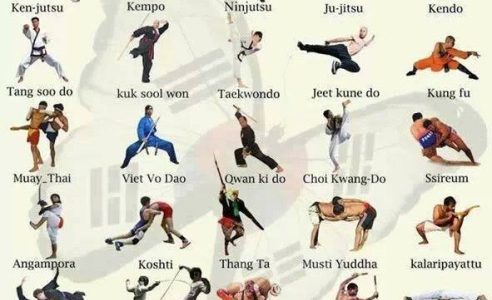The Development And Historic Significance Of Martial Arts Across Various Cultures
The Development And Historic Significance Of Martial Arts Across Various Cultures
Blog Article
Material By-Chu Fallon
Martial arts have an interesting background that extends centuries and continents. You could locate it intriguing just how ancient practices like Shuai Jiao and Kalaripayattu prepared for modern-day battle methods. These disciplines not only emphasize physical abilities but likewise show the societies that birthed them. As you explore their development, take into consideration exactly how globalization has actually changed these conventional types right into crossbreed styles. What martial arts reigns do you assume have formed today's martial arts landscape?
Ancient Martial arts: The Foundations of Combat
As you look into the globe of old martial arts, you'll find the rich foundations that formed combat methods across societies. Very early practices concentrated on Self-Defense and survival, often incorporating strikes, hurting, and weapons.
In old China, for instance, techniques like Shuai Jiao stressed tosses and joint locks, while India's Kalaripayattu showcased agility and fluid motion. Japanese samurai established Kenjutsu, a polished swordsmanship that highlighted discipline and technique.
These martial arts offered not just for fight but also as a means of individual advancement, instilling worths like regard and perseverance. The blending of these techniques in time prepared for the varied martial arts you see today, each mirroring the special viewpoints and demands of its society.
The Cultural Influence on Martial Arts Growth
While martial arts typically mirror the practical requirements of a culture, they additionally personify the social values and ideas of their beginnings. When you explore different martial arts, you'll discover just how they're influenced by religion, ideology, and social norms.
As an example, the focus on respect and self-control in Japanese martial arts comes from Zen Buddhism and samurai society. On https://www.wxyz.com/news/black-history-month/lifelong-detroiter-dedicated-to-sharing-his-gift-of-martial-arts , Brazilian Jiu-Jitsu advertises versatility and technique, formed by the need for efficiency in a diverse, multicultural atmosphere.
You could find that the rituals, uniforms, and training methods show a community's background and identification. By comprehending these social influences, you strengthen your admiration of martial arts and their function in shaping human experiences around the world.
Modern Adaptations and the Globalization of Martial arts
Martial arts have actually transformed dramatically in current decades, adjusting to contemporary society and international influences. You'll observe that typical kinds have blended with modern-day techniques, developing hybrid styles like mixed martial arts. These adjustments deal with varied audiences, making martial arts accessible and attractive worldwide.
With the rise of social media sites and electronic systems, you can locate tutorials and competitions from all edges of the world, damaging geographical barriers. This globalization has caused a shared gratitude for numerous disciplines, from Brazilian Jiu-Jitsu to Taekwondo.
As you involve with these arts, you'll recognize they're not practically fight; they promote fitness, self-control, and mental wellness.
Inevitably, contemporary adjustments have actually enriched the martial arts landscape, making it a dynamic and advancing method.
Conclusion
In exploring the history and advancement of martial arts, you reveal a fascinating blend of techniques, societies, and ideologies. From ancient techniques like Shuai Jiao and Kalaripayattu to the modern-day versatility seen in MMA, martial arts show humankind's pursuit for Self-Defense and individual development. As you engage with these practices, you not just acquire abilities but likewise a deeper gratitude for the varied traditions that shape our world today. So, proceed your journey and welcome the art of fight!
